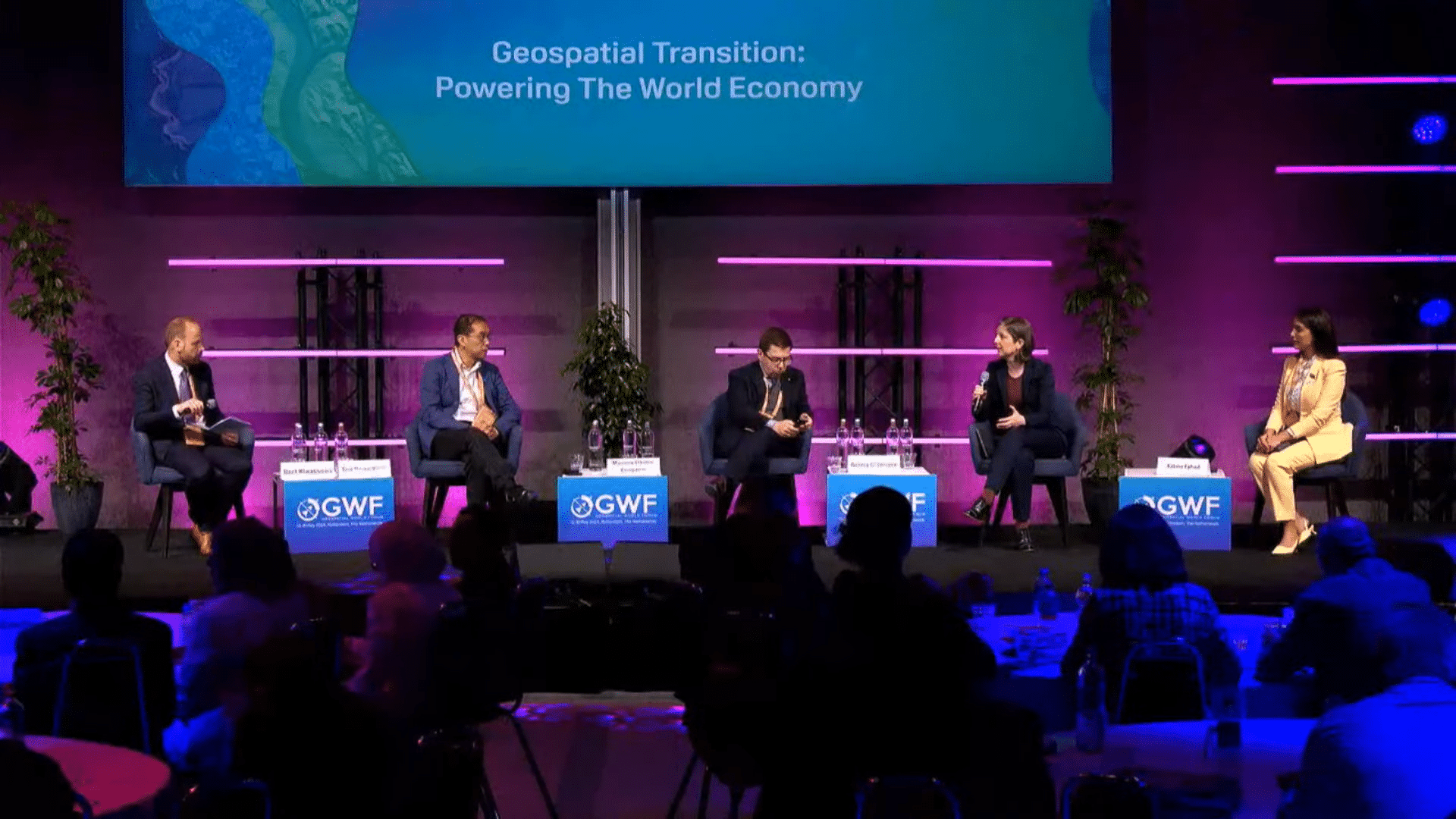With Mega projects popping up around the world, there has been a continuous push for adopting and disseminating geospatial data to empower the ultimate beneficiaries, the citizens.
On the first day of the Geospatial World Forum 2024, a plenary session was held on Geospatial transition driving economic value for the user industries, wherein, the esteemed panelists discussed various projects and how geospatial is enabling an efficient and holistic ecosystems for development as well as delivery of these projects that are ultimately aimed at transforming the lives of common citizens.
Moderated by Bert Klaassens, VP – Europe, Geospatial World, The Netherlands, the panel kicked off by discussing how geospatial can be sophisticated and tricky to grasp but has the ultimate potential of transforming things for the better.
Digital Nations
Fatma Fahad, Spokesperson & Media consultant, GEOSA, Saudi Arabia reiterated how geospatial is helping in building giga projects in the country.
“Saudi Arabia is building giga projects, which are being enabled by geospatial technologies such as BIM, Digital Twins, IoT, Metaverse, and 3D modelling amongst others. The role of GeoSA in the country’s infrastructure foray is to put in relevant regulation and legislations while being an enabler to support these giga projects.”
GeoSA has created a national geospatial platform for easy access to geospatial information and data for all the relevant authorities that might need the kind of data, according to Fatma.
“One thing we are proud of is the Digital Twin of Riyadh on GeoSA’s national geospatial platform which is something we still are working upon,” she stated.
“Over the last 50 years, JTC has been Singapore’s planner, developer, and operator of industries, real estate, and now fundamentally going forward to build Singapore as a smart nation,” said Tan Boon Khai, CEO, JTC Corporation, Singapore.
“This comes in because of the basis upon which geospatial data lies. It brings all of us together. We at JTC hope to make use of geospatial data the platforms for which you put the data on and put decision-making in the hands of ordinary citizens,” Tan emphasized.
“The future is really for ours to make based on geospatial data, platforms, technology but more importantly based on enthusiasts like all of us,” he stated.
Space Beneficiaries
The increasing number of satellites, variety of EO sensors, and the rise of new analytics techniques drive the growth of the satellite-based EO analytics industry.
“This enhances decision-making and operational processes in wide number of sectors,” said Massimo Claudio Comparini, Deputy CEO & ESVP, Thales Alenia Space, Italy.
He added the geospatial market is rapidly growing with the rise in the supply of information through the evolution of flagship EO programs like Copernicus and raising high revisits constellations.
This results in a global growing interest from institutional and commercial players in buying EO satellites and a democratization of the use of satellite data leading to an increase in demand from the end-user.
Massimo then unveiled an All-in-one satellite constellation that will be powered by optical and radar microsatellites, combining frequency and control for a night and day, all-weather capability.
Customer focus
Public sector customer needs are changing these days. They are living with tighter budgets, and when it comes to data, quality data on tighter budgets is only possible with enabling efficiency in data capturing.
“These efficiencies come through hybrid sensors and distributed measurement devices that require more and better data than we’ve ever seen before,” said Adina Gillespie, VP-Strategic Initiatives – Geospatial Content, Hexagon, USA.
“They have more stakeholders from different domains, many of which are often distrusted geographically, they need flexible licensing models and sometimes fully open data to keep it simple and satisfy their large stakeholder communities,” she added.









